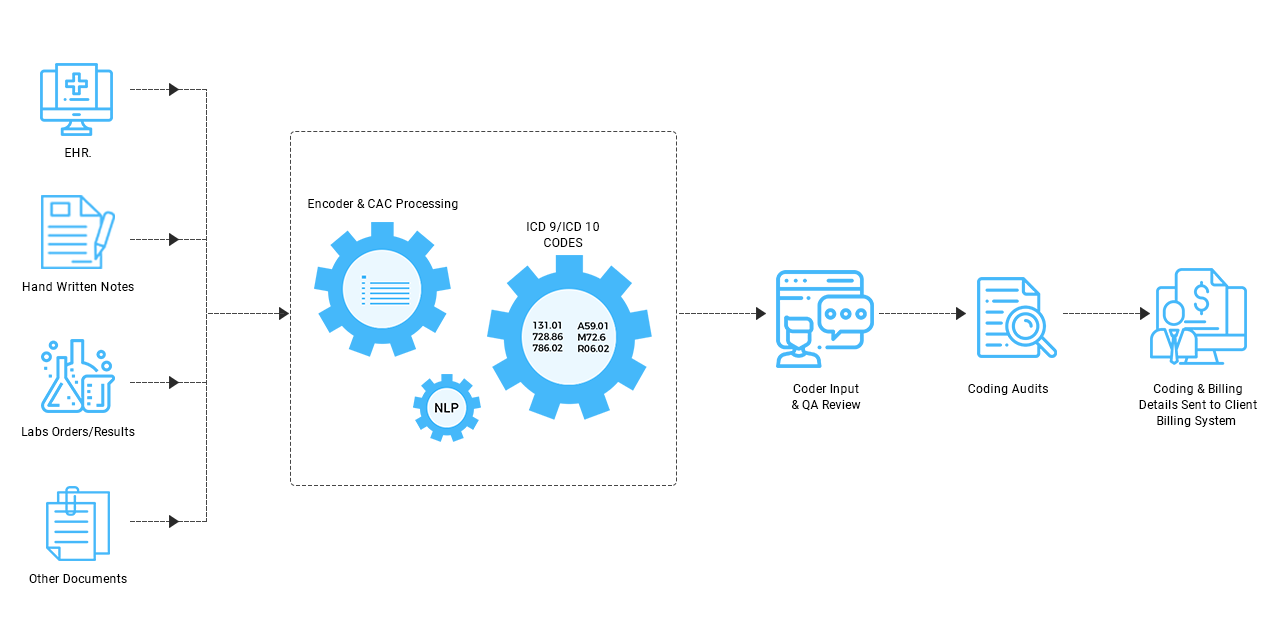The transformation of any medical diagnosis, their clinical procedures, and the treatments is called Medical Coding. The necessary work of Medical Coding is to translate the clinical procedures data into a pre-defined code. Medical coding solutions help out and ensure the medical regulations are applied accurately, and it's creating a claim that will be compensated by an insurance carrier. Medical coding solutions is the backbone of the healthcare revenue cycle that ultimately ensures patients and the payers reimburse providers for the services delivered. It involves billable information from the medical record, while medical billing uses those codes to create the insurance claim and bill for the patients.
Medical coding system intersect to form the backbone of the healthcare revenue cycle by creating claims. They help the organizations and ensure they understand the fundamentals that can help providers and offer smooth RCM. When a patient occurs, providers detail the service inpatient management systems' visit and explain why they furnished out specific services. The providers use clinical documentation to adjust the payers' reimbursement process when any conflict related to the claim arises. If no good service is giving, the organization could face a claim denial and potentially write off. There is also punishment for healthcare fraud if they attempt to bill payers and patients for services incorrectly in medical records or patients' datas.
Whenever a provider discharges a patient from a hospital, or the patients leave the office, professional medical coders are reviewed and analyzed clinical documentation that connects services with codes to diagnosis, procedure, and professional facility code.
Understanding ICD 10 diagnosis codes.
There is a diagnosis code, which is the key to describe a patient's condition. The clinical coding solution provides the patient's condition where injury or a symptom is located and if the visit is related to the initial or subsequent encounter. These codes often support medical billing by explaining why a patient's sought medical service and the severity of the condition or injury.

Comments
Post a Comment